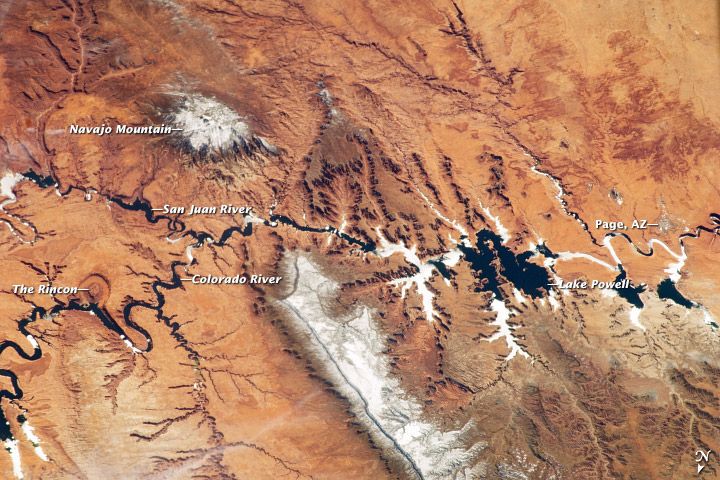
Is the Colorado River Damned? Op-Ed

Gary Wockner is director of the Save The Colorado River Campaign, which provides funding for community river preservation organizations throughout the Colorado River basin. Wockner contributed this article to LiveScience's Expert Voices: Op-Ed & Insights.
More than 35 million people throughout the southwestern United States and northern Mexico depend on the Colorado River's water. In 30 years, that total number is likely to double.
That's why so many call the Colorado the "lifeblood of the West."
But yesterday (April 17), American Rivers declared the Colorado River America's Most Endangered River, and climate change is a big part of the picture.
The warming, drying climate of the Southwest is hitting the river hard. We now know that drought is likely to be the new normal in the Colorado River basin — scientists tell us that climate change could reduce the amount of water in the Colorado River ecosystem by 9 to 20 percent. Predictions of climate change and water usage draining the famed Lake Mead and Lake Powell dry are a small, but real, part of that picture.
This year is proving no exception. Scientists with the National Oceanic and Atmospheric Administration (NOAA) now say that the April through July inflow into Lake Powell, the largest reservoir in the Upper Colorado Basin, will be a mere 2.7 million acre-feet — the lowest amount since NOAA began issuing forecasts in 1979. Combined inflows from this year and last year's runoff seasons are likely to be the driest since Lake Powell began filling in behind the Glen Canyon Dam in September 1969.
Around the state of Colorado, communities are preparing for another year of epic drought. On May 1, 2013, Denver Water (which uses a lot of Colorado River water) and Colorado Parks and Wildlife will close Antero Reservoir in Park County, Colo., and drain the reservoir to save water. In Fort Collins, the Cache la Poudre River is running at historic lows and is still clogged with ash, soot and debris swept down from last year's historic forest fires. Fort Collins is now relying almost solely on the Colorado River for drinking water supplies.
Sign up for the Live Science daily newsletter now
Get the world’s most fascinating discoveries delivered straight to your inbox.
Against that dire backdrop, cities and states throughout the Colorado basin unfortunately continue to bark up the wrong tree — proposing dam, reservoir, pipeline and energy projects that would drain the last drops of the free-flowing Colorado River and its tributaries, instead of aggressively focusing on water conservation, efficiency and a rapid shift away from dirty energy projects.
Today, demand on the river's water exceeds supply, leaving the river so over-tapped that it no longer flows to the sea. A century of water management policies and practices that have promoted wasteful water use have put the river at a critical crossroads.
The good news is that the federal government has stepped up its efforts to address this endangered river, with a comprehensive study completed by the Department of the Interior in 2012. Now it's time for Congress to follow up with robust funding for water conservation programs throughout the basin, and especially for investments to increase the efficiency of water projects that are already built, as well as restoration funds for the river's critical habitats.
There is enough water in the river to sustain both human and natural communities, but only if it's used wisely. Gone are the days when we can build another dam or pipeline on the Colorado River and worry about its impacts later. Today, there just isn't any more water left — the river is endangered.
The views expressed are those of the author and do not necessarily reflect the views of the publisher.












